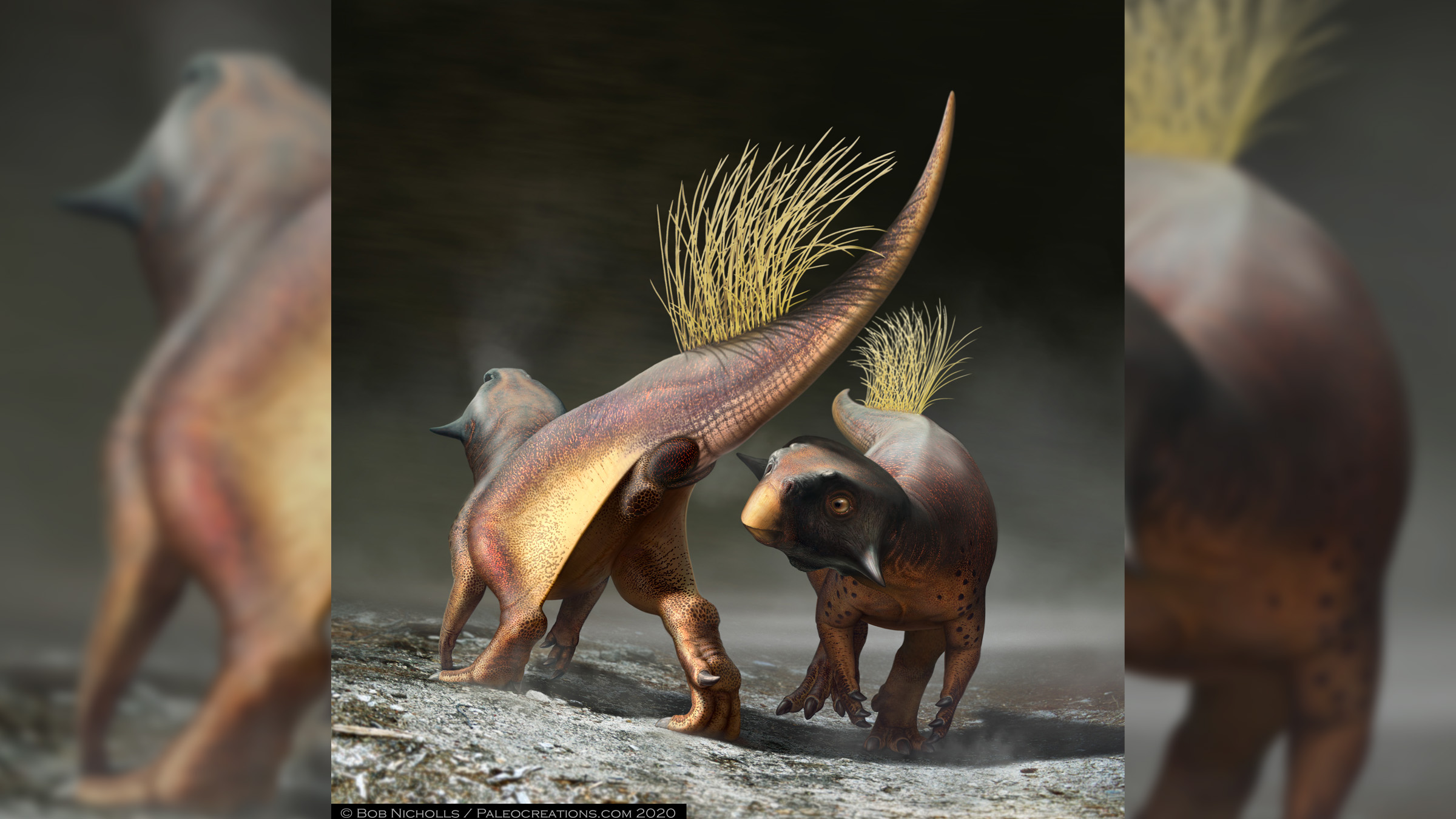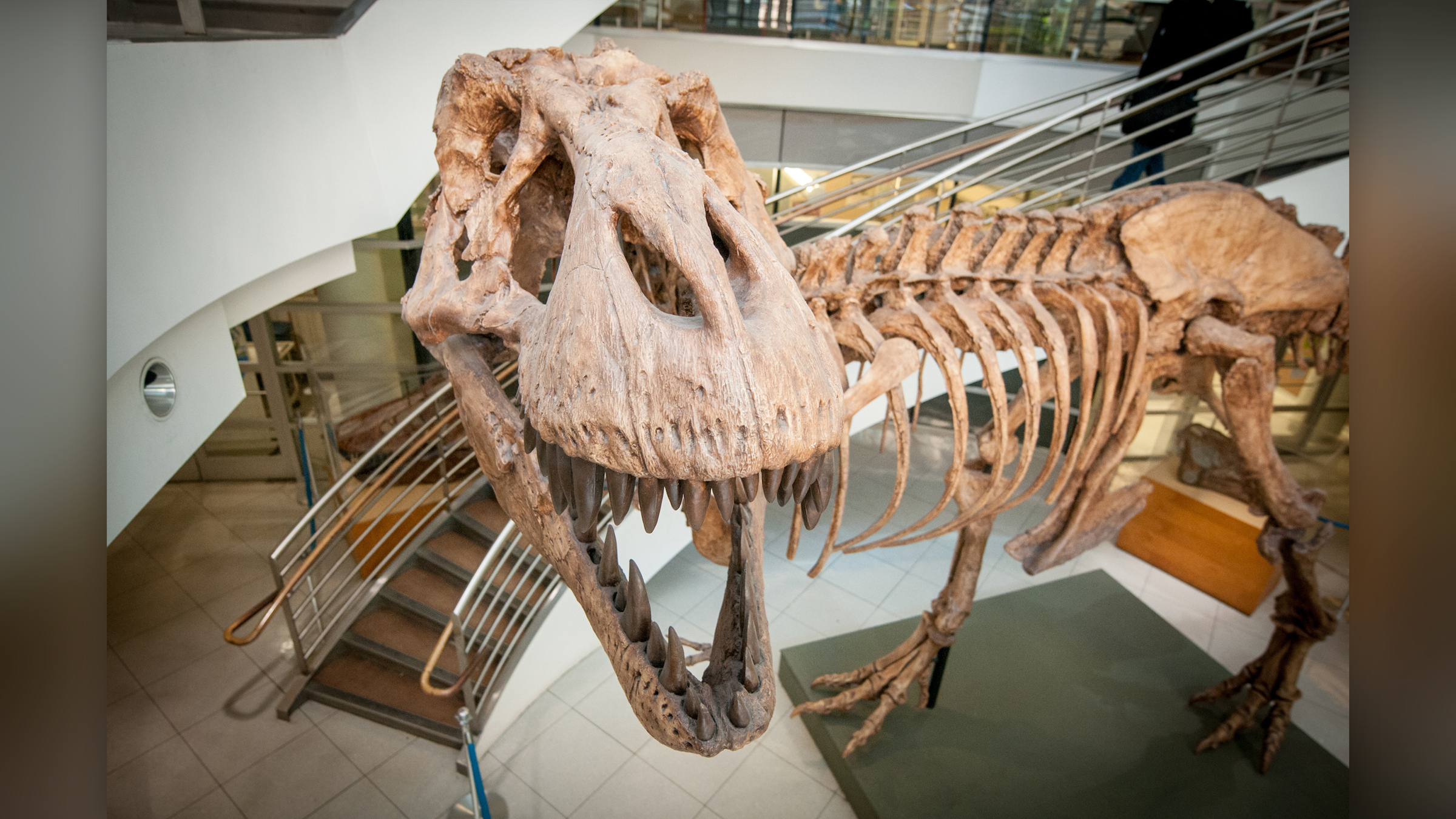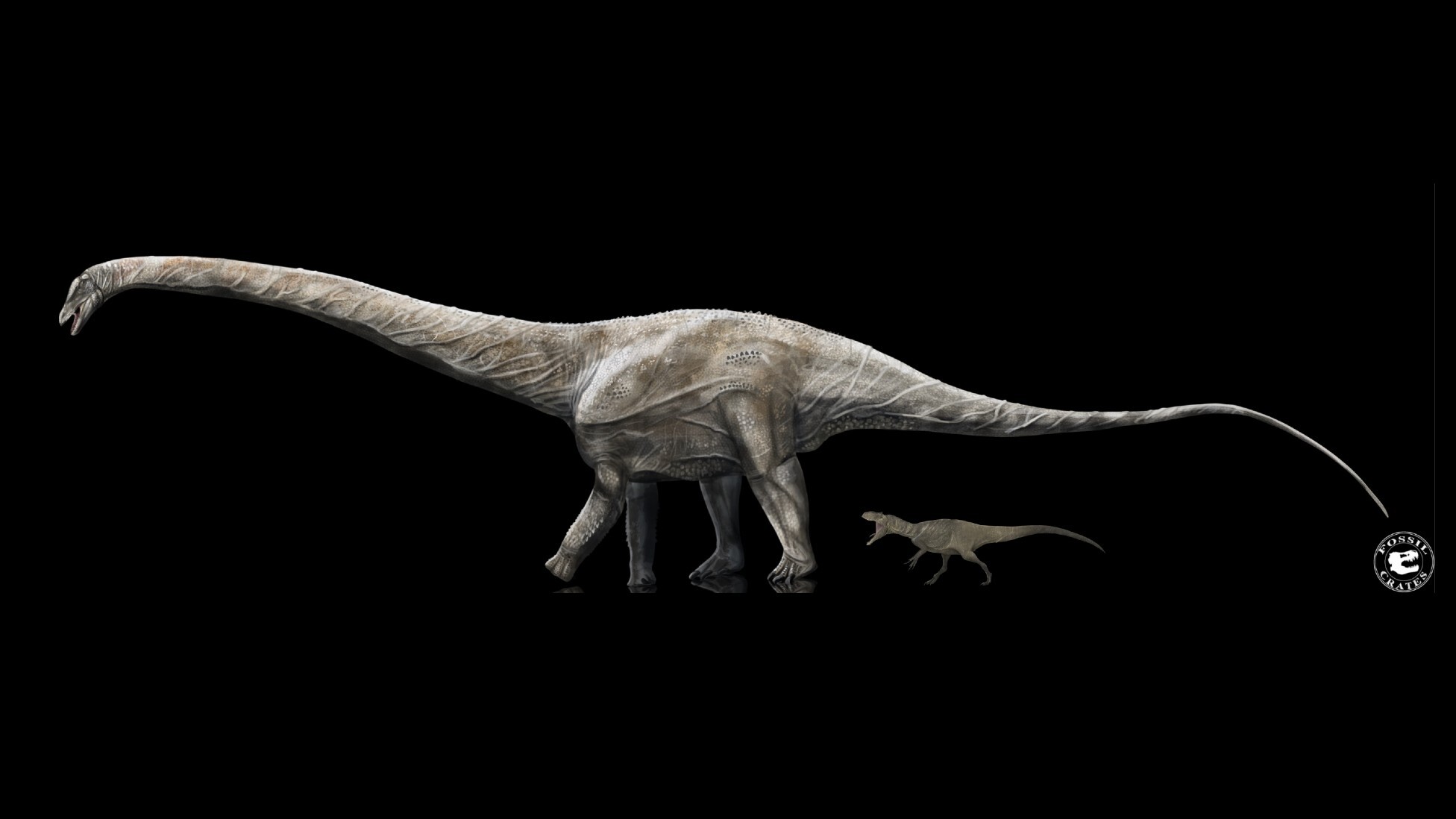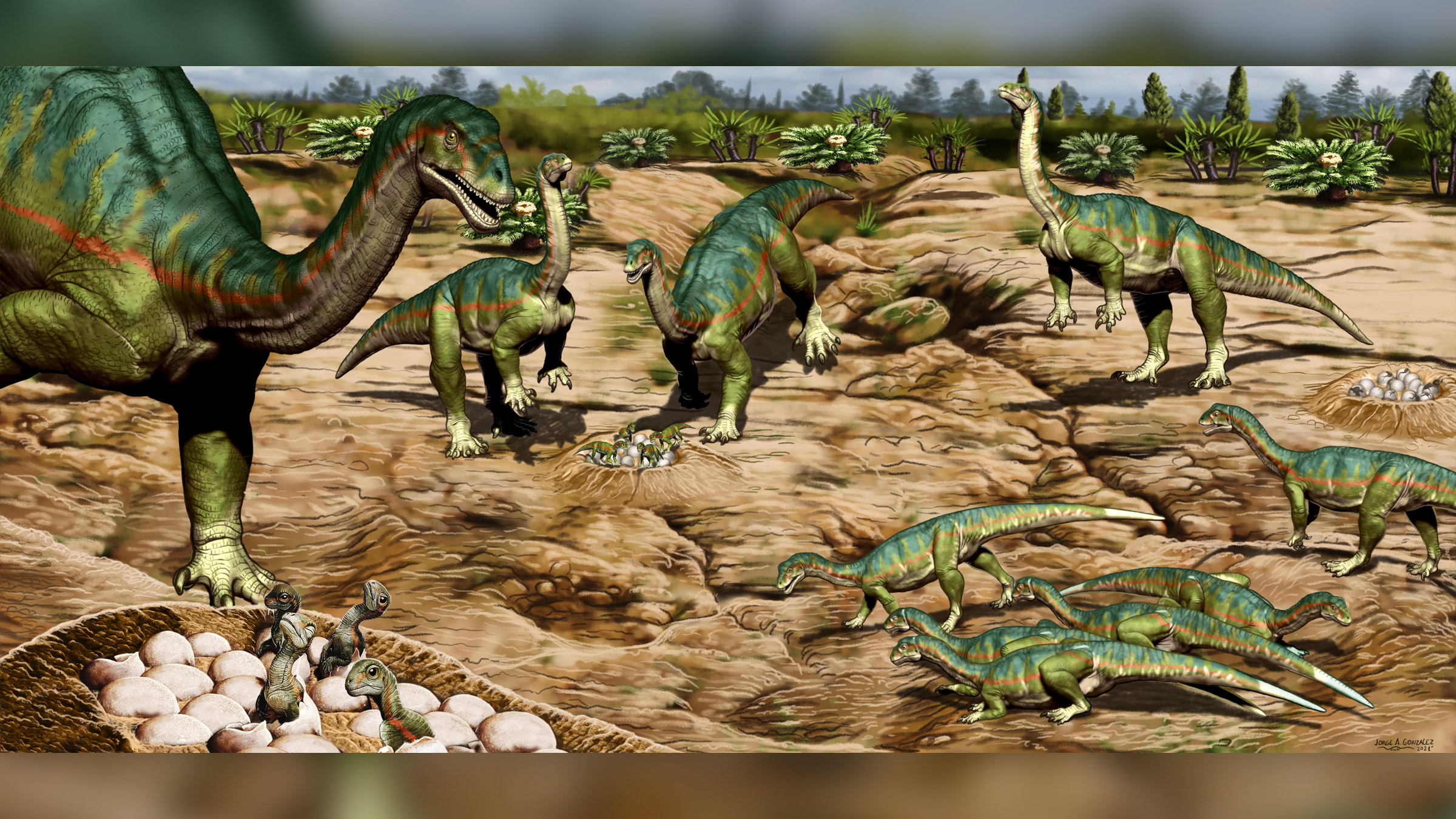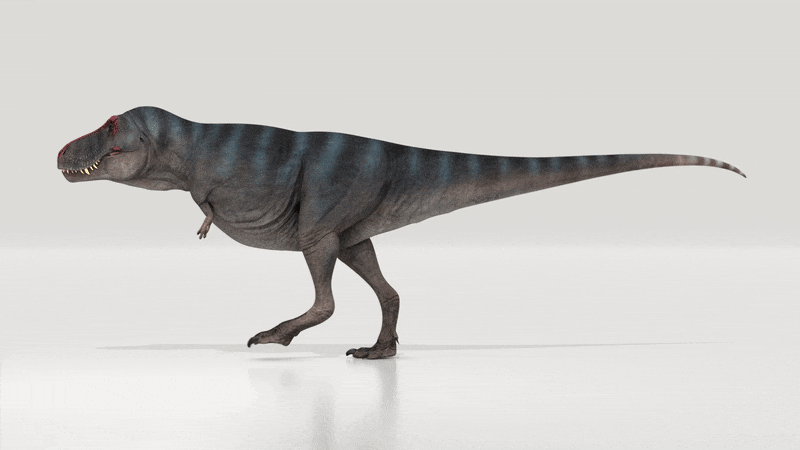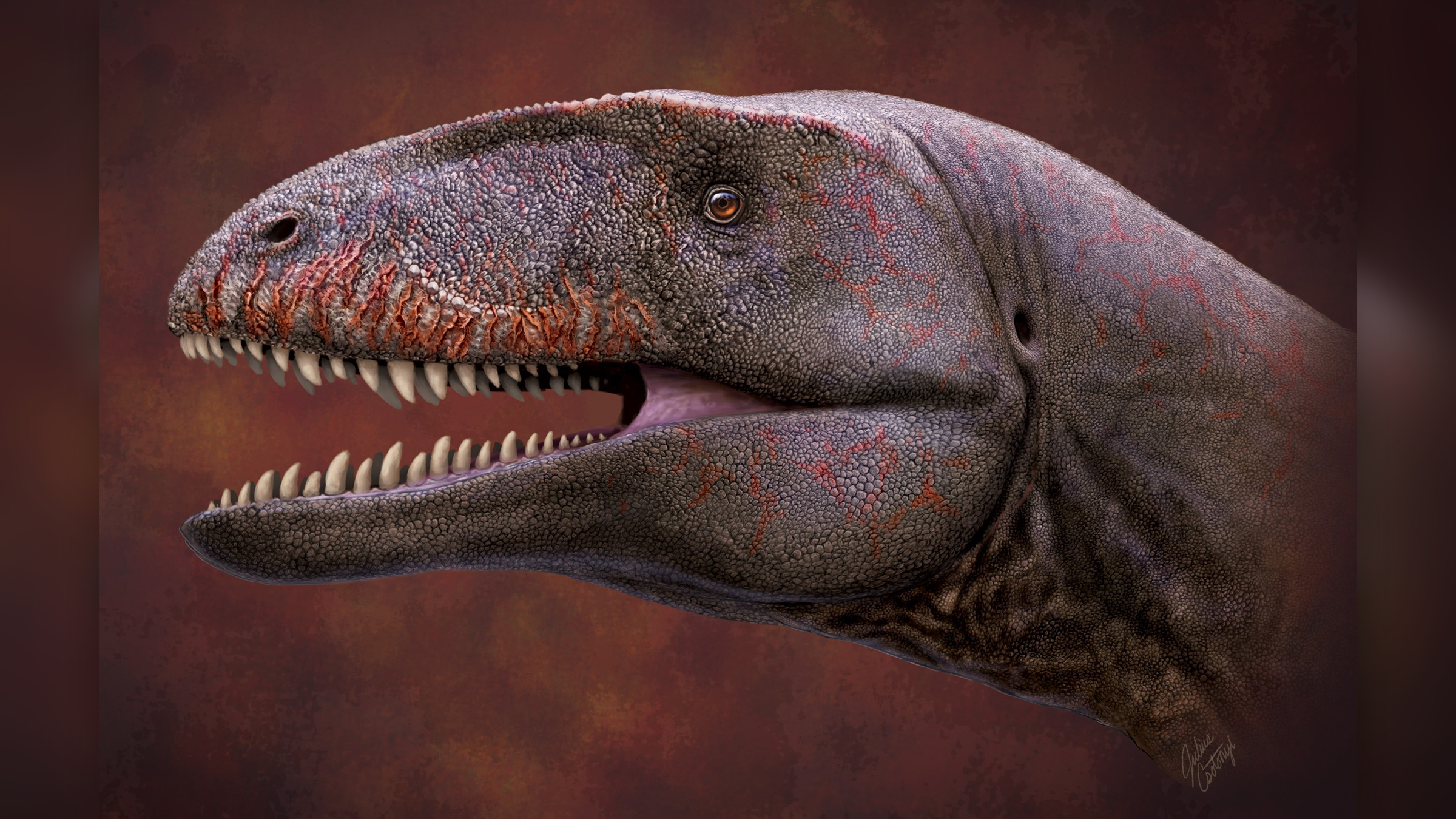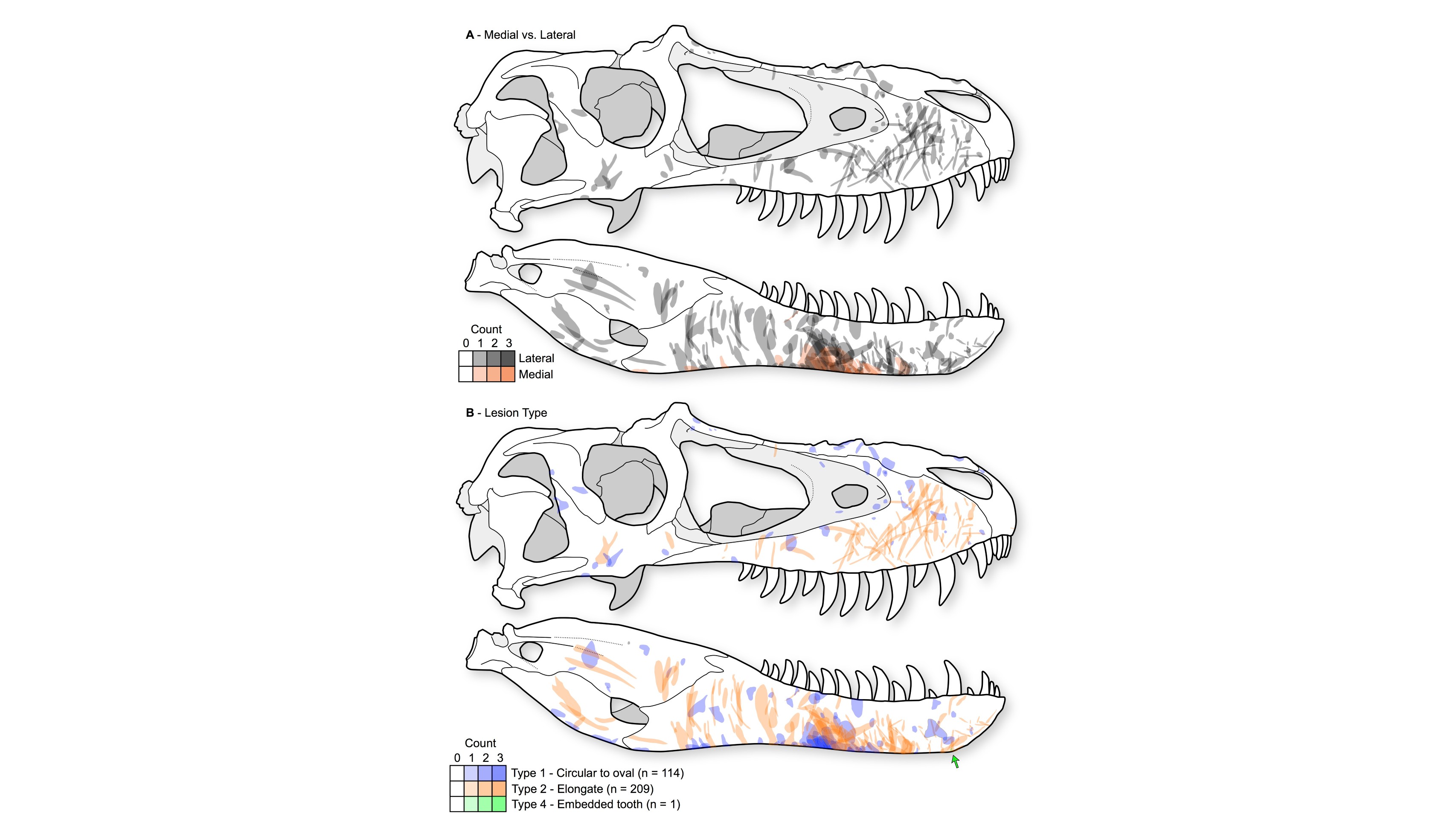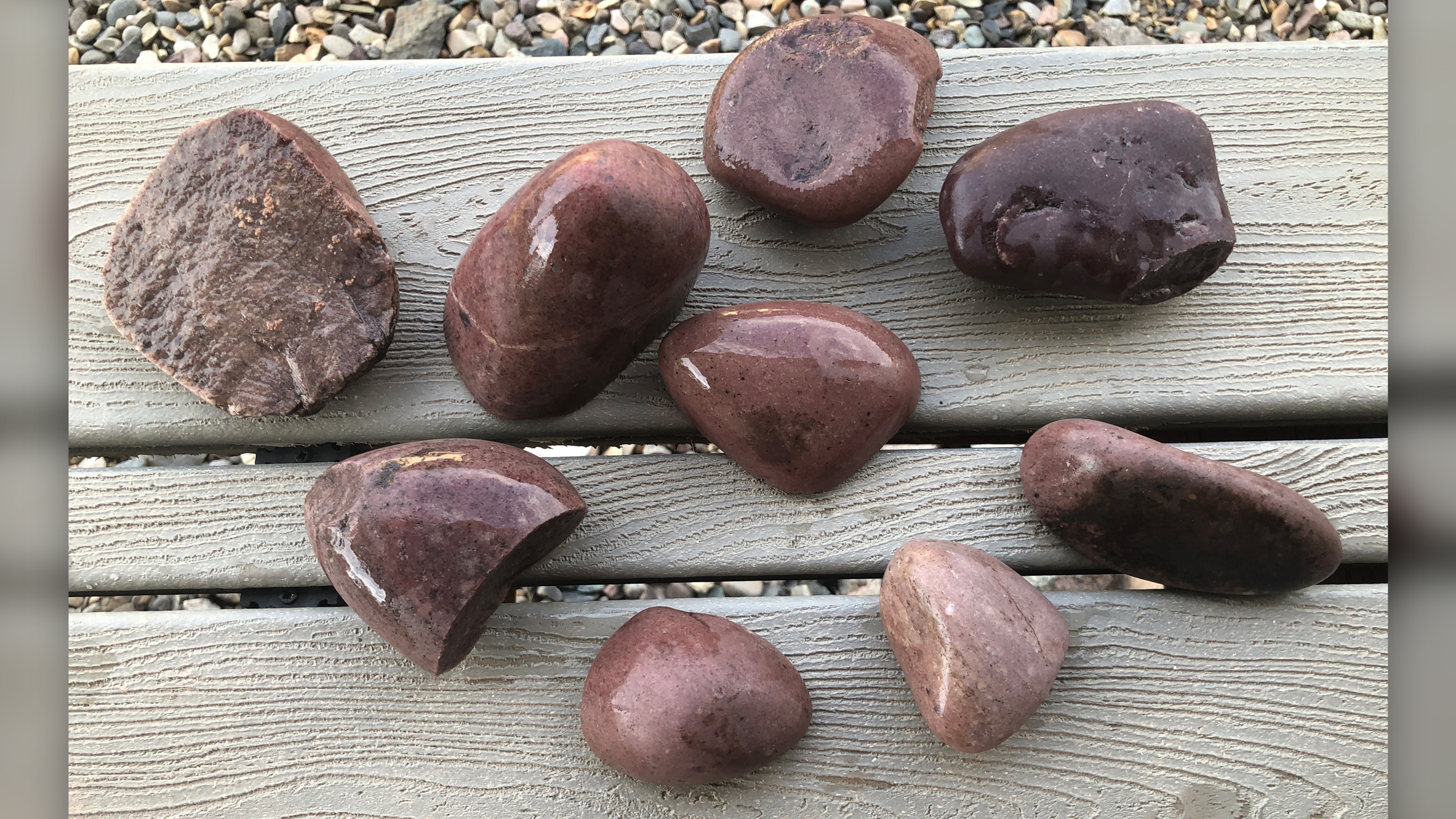10 extraordinary dinosaur discoveries from 2021
These dinos weren't messing around.
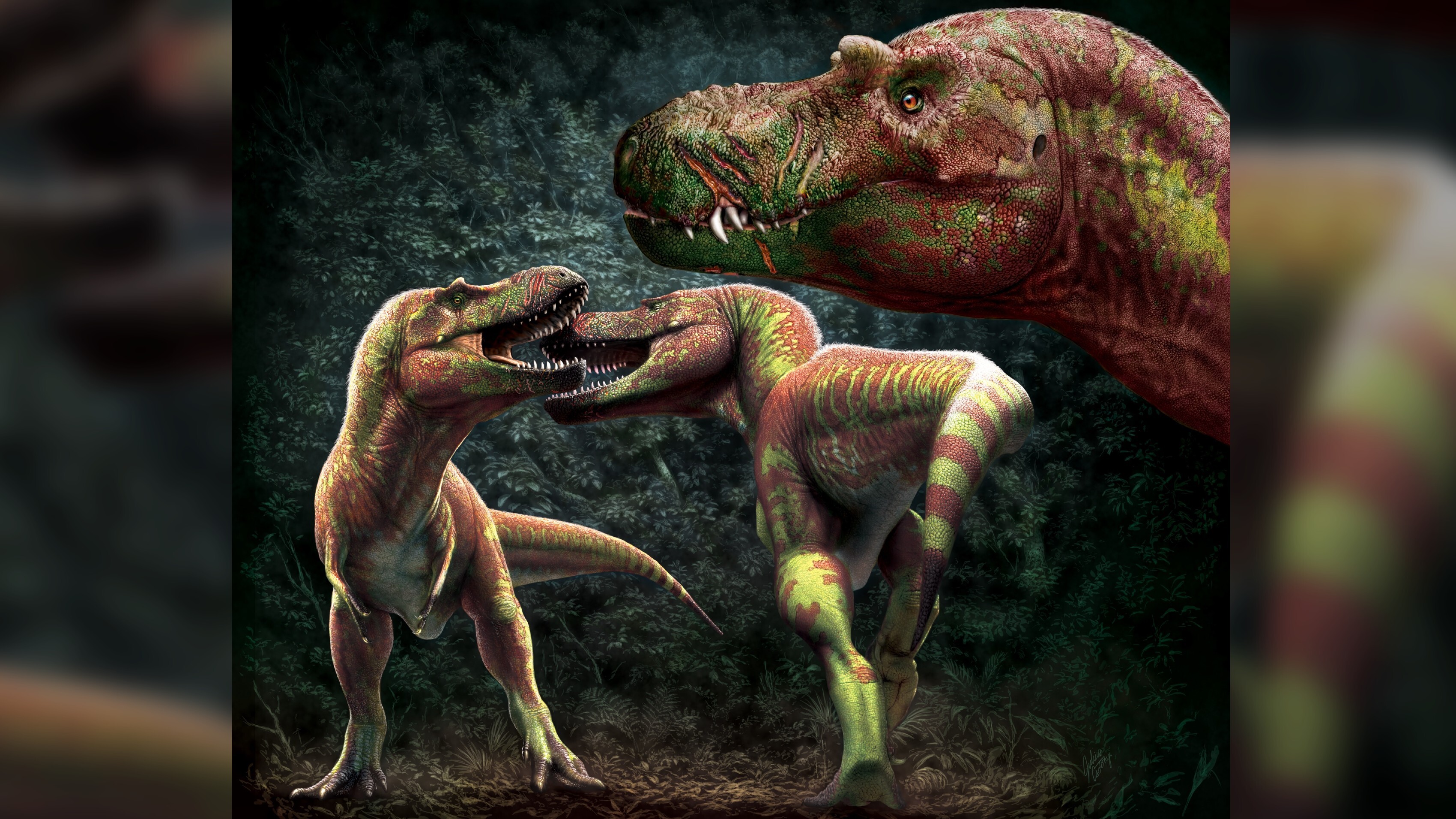
When it came to dinosaur discoveries, 2021 did not disappoint. Researchers investigated how many Tyrannosaurus rex individuals ever existed, documented the longest dinosaur on record and described several stunning new dinosaur species. Here are 10 times dinosaur news totally crushed it this year.
Related: The 10 coolest dinosaur findings of 2020
1. First preserved dinosaur butthole is "perfect"
Researchers have found all kinds of dinosaur remnants — bones, teeth and impressions of skin and feathers, for instance — but they've never found a butthole … until now. This opening — known as a cloacal vent, which dinosaurs used for pooping, peeing, breeding and egg laying — isn't like any other on record, according to a January study in the journal Current Biology. "It's its own cloaca, shaped in its perfect, unique way," study lead researcher Jakob Vinther, a paleobiologist at the University of Bristol in the United Kingdom, told Live Science.
Now that's a behind we can get behind.
Read more: 1st preserved dinosaur butthole is 'perfect' and 'unique,' paleontologist says
2. T. rex numbered in the billions
As many as 2.5 billion T. rex individuals existed over the last 2.5 million years of the Cretaceous period (145 million to 66 million years ago), before the dinosaur-killing asteroid collided with Earth. Researchers looked at all kinds of factors to determine this number, including the dinosaur king's population density, habitat size, generation time and total number of generations, according to a study published in April in the journal Science.
That's a lot, especially considering that fewer than 100 fossilized T. rex individuals are known to science.
Get the world’s most fascinating discoveries delivered straight to your inbox.
Read more: As many as 2.5 billion Tyrannosaurus rexes once stalked Earth
3. Supersaurus is the longest dinosaur on record
The longest dinosaur on record is the aptly named Supersaurus, which exceeded 128 feet (39 meters) and possibly even reached 137 feet (42 m) in length, according to unpublished research presented this year at the Society of Vertebrate Paleontology annual conference.
Supersaurus, discovered in 1972, was always known to be long, with previous estimates putting the plant eater at 111 feet (34 m). But now, newly excavated and analyzed bones reveal just how super this dinosaur was.
Read more: Supersaurus might be the longest dinosaur that ever lived
4. Dinosaurs young and old traveled in herds
Have you heard? Long-necked dinosaurs, from mouse-size hatchlings to gigantic adults, traveled together in herds 40 million years earlier than previously thought, a dinosaur graveyard discovered in Argentina revealed. Researchers unearthed more than 100 fossilized eggs and the bones of 80 Mussaurus patagonicus individuals dating to 192 million years ago, during the Jurassic period (201.3 million to 145 million years ago).
Incredibly, there was even evidence that young dinosaurs hung out (and died) together, indicating that the herd had an internal structure. This is the oldest evidence of socially complex, gregarious behavior in dinosaurs, according to the study, published in October in the journal Scientific Reports.
Read more: Jurassic graveyard reveals oldest evidence that dinosaurs traveled in herds
5. This dino died sheltering eggs
An ostrich-like dinosaur that died brooding a nest of eggs has become a one-of-a-kind discovery: It's the only known nonavian dinosaur specimen found sitting on top of eggs that still have embryos. This dinosaur, an oviraptorosaur, was likely incubating the eggs as it sat on them during the Cretaceous period in what is now China, according to a study published in May in the journal Science Bulletin.
Of the 24 eggs, seven still have fossilized embryos. That's not bad for eggs that are 70 million years old!
Read more: 'Rarest of the rare' dinosaur fossil found brooding its eggs
6. Some dinosaurs, but not T. rex, were extremely fast
Meat-eating dinosaurs sprinted at speeds of nearly 28 mph (45 km/h), according to an analysis of two dinosaur trackways in northern Spain. The trackways were left behind by two different carnivorous individuals running in a squishy lake bed during the early Cretaceous, a December study in the journal Scientific Reports found. The discovery reveals that these beasts were about as speedy as the fastest human on record, Usain Bolt, who briefly reached 27.5 mph (44.3 km/h) at a race in 2009.
But T. rex, the most famous carnivore of them all, was a slowpoke, with a preferred walking speed of just under 3 mph (5 km/h), according to a separate study, published in April in the journal Royal Society Open Science. That's about the average walking speed for a person.
Is this embarrassing for the dinosaur king? Yes. But T. rex did have serrated, banana-size teeth and one of the most powerful bite forces on record, so it's not like we'd laugh in its face or anything (unless we were walking away at a brisk clip).
Read more: Meat-eating dinosaurs were terrifyingly fast, footprints reveal and Never mind outrunning a T. rex — you could probably outwalk it
7. A "shark-toothed" dinosaur was larger than its rival tyrannosaur
Imagine seeing a big tyrannosaur and thinking it must be the apex predator of its ecosystem. But nope, you'd be wrong — because an even larger dinosaur lumbers into view, and wow is it big! This beast, the newly described Ulughbegsaurus uzbekistanensis, was a so-called shark-toothed dinosaur, or carcharodontosaur, according to a September study in the journal Royal Society Open Science. Carcharodontosaurs were cousins and competitors of tyrannosaurs.
U. uzbekistanensis lived in what is now Uzbekistan about 90 million years ago. It was 26 feet (8 meters) long and weighed 2,200 pounds (1,000 kilograms). Put another way, it was twice the length of — and more than five times heavier than — the ecosystem's previously known apex predator, the tyrannosaur Timurlengia.
Read more: Gigantic 'shark-toothed' dinosaur discovered in Uzbekistan
8. Tyrannosaurs had fight clubs
Fearsome tyrannosaurs bit each other's faces, but likely not with the intention to kill. Instead, these predators probably got bitey when they were battling for prizes, like territory, mates or higher status, a September study in the journal Paleobiology found.
This insight into dinosaur behavior was made possible by studying 202 tyrannosaur skulls and jaws that had a lot of scars — 324 in total. Only about half of the older tyrannosaurs had these scars, so perhaps just mature members of one sex partook in these rumbles.
Read more: Tyrannosaurs bit each other's faces in dino fight clubs
9. Long-necked dinosaurs migrated long distances
How do you determine whether dinosaurs migrated? It's not like these beasts sent postcards that then fossilized. Well, one way is to look at gastroliths, or "stomach stones" used to grind food, that dinosaurs gulped down in one region and then deposited in another.
In the Jurassic period, long-necked dinosaurs, called sauropods, swallowed pink quartzite gastroliths in what is now Wisconsin and later died in what is now Wyoming, leaving the stones in a new spot, researchers wrote in a February study in the journal Terra Nova.
That's a distance of hundreds of miles, or "one of, if not the longest inferred examples of [nonavian] dinosaur migration" on record, the researchers said.
Read more: Long-necked dinosaurs migrated hundreds of miles, 'stomach stones' reveal
10. Weird ankylosaur had an Aztec war club-like tail
This year revealed a totally unknown lineage of ankylosaurs in the Southern Hemisphere, and these dinos had unique tails.
When Pangaea split up during the Jurassic period, the ankylosaurus in the northern supercontinent Laurasia grew weaponized tails with spikes and clubs. But now, the newly described Stegouros elengassen, found in Chile, shows that ankylosaurs in the Southern Hemisphere evolved to be very different. They developed their own kind of weaponized tail that looks like an Aztec sword, or macuahuitl.
The newly discovered ankylosaur died more than 70 million years ago by a river, possibly in quicksand, which would explain why the specimen was so well preserved. Thank goodness, or that spectacular tail might have been lost!
Read more: 'Very weird' ankylosaur's tail looked like an Aztec war club
Originally published on Live Science.

Laura is the managing editor at Live Science. She also runs the archaeology section and the Life's Little Mysteries series. Her work has appeared in The New York Times, Scholastic, Popular Science and Spectrum, a site on autism research. She has won multiple awards from the Society of Professional Journalists and the Washington Newspaper Publishers Association for her reporting at a weekly newspaper near Seattle. Laura holds a bachelor's degree in English literature and psychology from Washington University in St. Louis and a master's degree in science writing from NYU.


